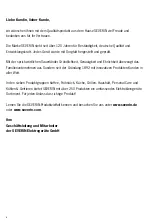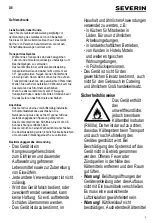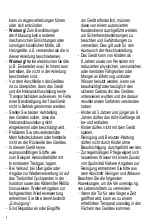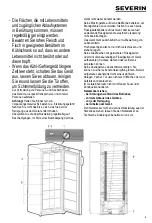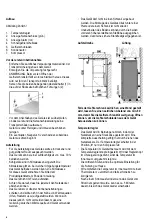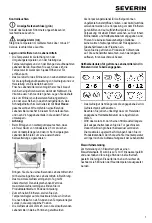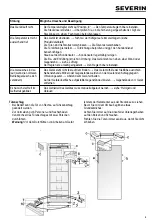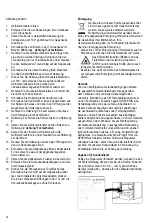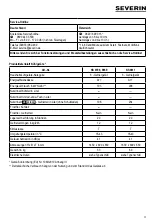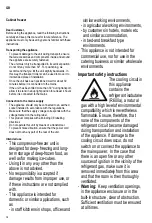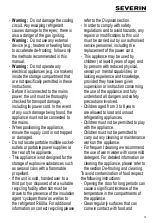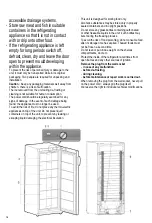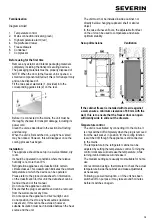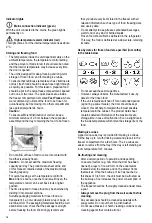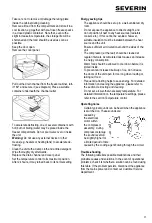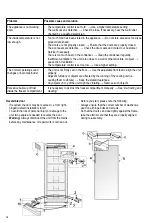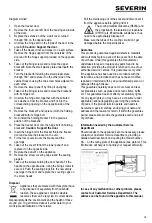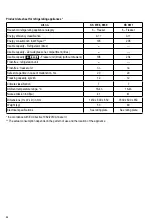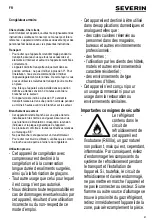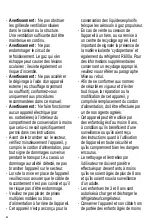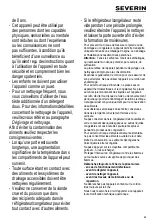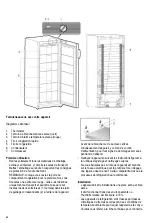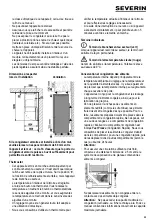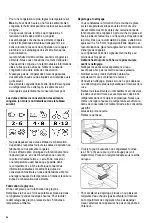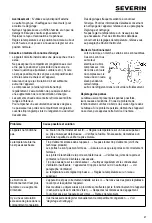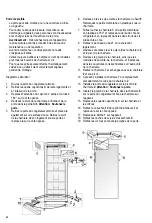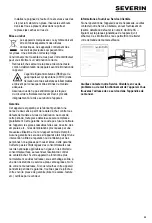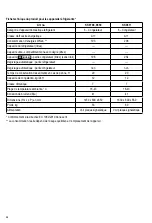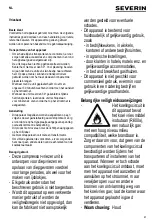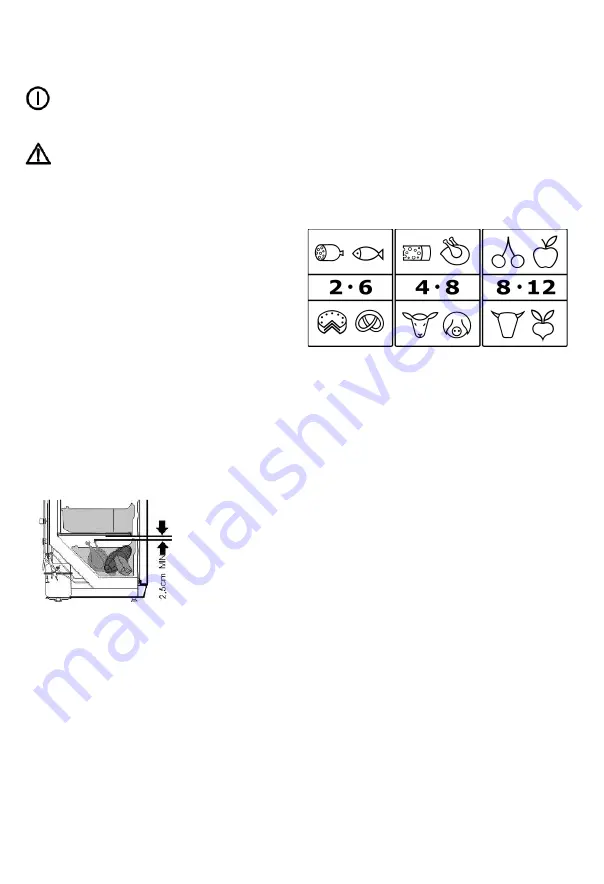
16
Indicator lights
Mains connection indicator (green)
With the unit connected to the mains, the green light is
permanently on.
High-temperature alarm indicator (red)
This light comes on if the internal temperature rises above
9 °C.
Storing and freezing food
∙
The temperature inside the unit depends mainly on the
ambient temperature, the temperature control setting
and the amount of food stored. It should also be noted
that the interior temperature may increase every time
the door is opened.
∙
The unit is designed for deep-freezing and long-term
storage of frozen food, and for making ice cubes.
∙
To ensure that nutritious elements such as vitamins are
not lost, fresh food should be deep-frozen right through
as quickly as possible. For this reason, prepared food
should be put in the quick-freeze compartment, spaced
out in one or two rows. The quick-freeze area inside
the freezer compartment is marked
Fast Freeze
, where
we recommend you
fi
rst put the food to be frozen for
quick-freezing, before moving it to other compartments
(as appropriate) after 24 hours.
∙
Caution:
∙
To ensure suf
fi
cient distribution of cold air, keep a
minimum distance of 2.5 cm between the vapouriser
assembly and the tray containing the food to be frozen.
∙
Do not allow unfrozen food to come into contact with
food that is already frozen.
∙
Caution:
Do not exceed the maximum freezing
capacity per day. The product data sheet at the end
of this manual contains details of the maximum daily
freezing capacity.
∙
For quick-freezing, set the temperature control to
Max
. After 24 hours, once the food is well frozen, the
temperature control can be set back to its original
position.
∙
The time required to freeze food may be shortened by
dividing it into smaller portions.
∙
Suitable packaging materials for frozen food are
transparent (i.e. non-coloured) plastic wrap or bags, or
aluminium foil. The packaging materials should be well
aired before use; check that the package is air-tight
before freezing the food. We strongly recommend
that you label every item stored in the freezer with all
relevant information such as type of food, freezing date
and use-by date.
∙
Do not attempt to deep-freeze carbonated beverages,
warm food or any kind of bottled liquids.
∙
Frozen food should
fi
rst be defrosted in the refrigerator.
This way, the food is defrosted at a slower rate, retaining
its taste.
Use-by dates for frozen food are speci
fi
ed (in months)
in the table below
.
∙
Do not exceed these storage times.
∙
However, always observe the manufacturer’s use-by
dates for the frozen food.
∙
If the unit remains switched off for an extended period
(eg during a power failure), the door should be kept
closed; this will help to maintain the lowest possible
temperature in the cabinet. The product data sheet
contains detailed information of the maximum safe
storage time in case of malfunction. Even a slight rise in
the inside temperature will shorten the storage life of the
food.
Making ice cubes
A special ice-cube tray is provided for making ice cubes.
Fill the tray up to ¾ with drinking water and place it in the
freezer compartment for a few hours. The ice cubes are
easier to remove from the tray if the tray is left standing at
room temperature for 5 minutes.
De-frosting and cleaning
∙
After a certain period of operation and depending
on several factors (e.g. how often the door has been
opened), a layer of ice will form on the evaporators
located below the drawers and on the drawer fronts
themselves. Once the build-up of ice has reached a
thickness of 3 to 5 mm, the unit must be de-frosted, as
the build-up of ice increases the power consumption of
the appliance.
∙
The freezer should be thoroughly cleaned at least twice
a year.
∙
Always remove the plug from the wall socket before
cleaning.
∙
Any accessories should be cleaned separately with
soapy water. Do not put them in a dishwasher.
∙
Do not use abrasives or harsh cleaning solutions or any
cleaning agents that contain alcohol.

